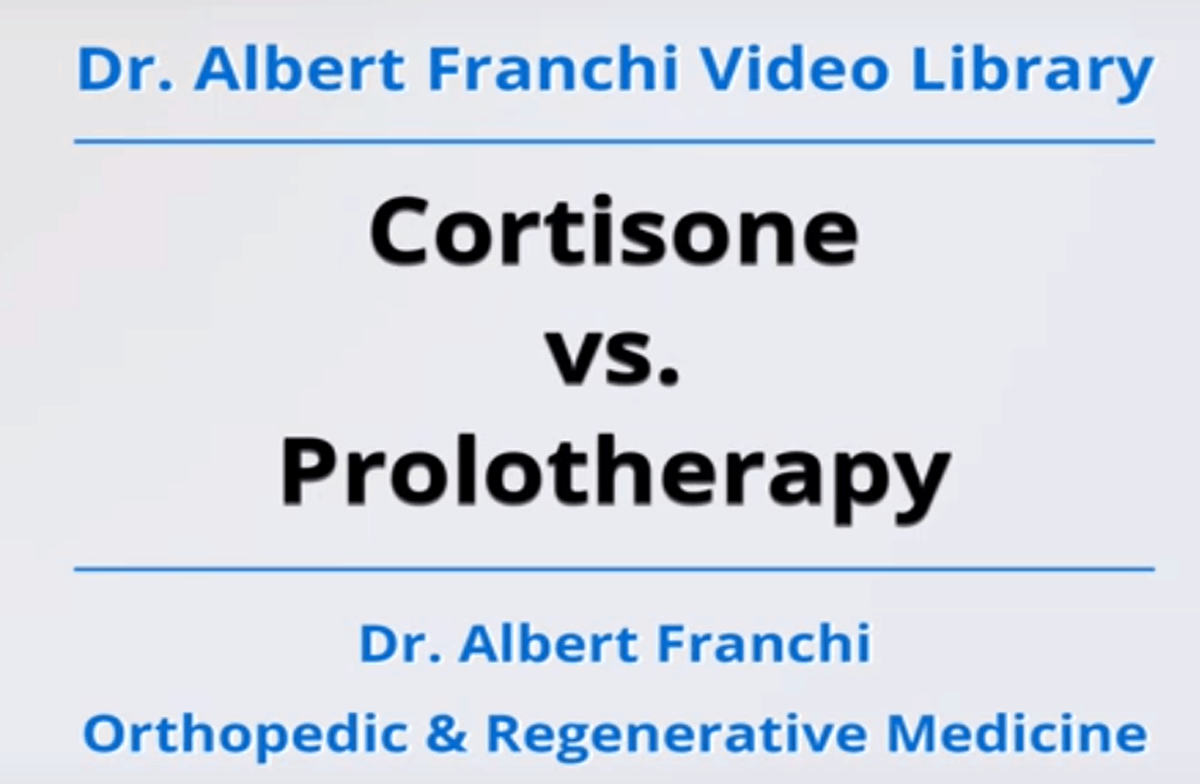Cortisone Boston
Cortisone shots are used to treat a range of orthopedic issues, including tendonitis and arthritis. Cortisone mimics the actions of cortisol in your body, which is released by the adrenal glands. Unfortunately the effects of cortisone are short-lived.
While cortisone shots are powerful anti-inflammatory medications, they have many limitations. At Boston Prolotherapy & Orthopedics, we encourage treatments that provide long-term relief to issues such as back pain, arthritis, and tendonitis. We recommend Prolotherapy for patients who want to lead more active lives.
Uses of Cortisone
Cortisone shots typically contain a corticosteroid medication, and the doctor may include a local anesthetic for pain relief. The shot can be painful, especially if the physician removes fluid before the injection. You will feel more pain when receiving the injection to a small joint compared to a larger one. However, the pain will be tolerable if experienced hands give the shot.
Cortisone injections will relieve inflammation around the targeted area and reduce pain. The shots typically work within several days, with the effects lasting for a few months. Various conditions for Cortisone treatments would include:
- Bursitis
- Osteoarthritis
- Gout
- Arthritis
- Back pain
What to Expect
1. Before the Treatment
You may benefit from cortisone if you have pain because of an inflamed joint. Your medical history will affect the medication’s suitability for you. You will also need to disclose all medications you are using, including blood thinners and dietary supplements with blood-thinning effects.One of the side effects is that cortisone may increase blood sugar in brittle diabetics.
Your physician may recommend X-rays and other tests, depending on your age and diagnosis. You can also ask your physician about other options for treating your condition since cortisone injections only provide short-term relief.
2. During the Treatment
Cortisone shots are typically administered in an outpatient setting and take just a few minutes. To start, you will lay down at an angle that gives the health professional access to the inflamed joint. It is advisable to take deep breaths to be as relaxed as possible.
You will experience a pinching sensation as the cortisone is being injected, although a local anesthetic will be included to make you more comfortable. The physician will then clean and bandage the injection site. You may be required to flex the joint to encourage the spread of the cortisone.
3. After you are treated with cortisone.
Most people will walk around immediately and effortlessly after the shot. You can drive yourself home after being observed for a short time. Resting the joint is vital for reducing inflammation, and you should avoid formal exercise for several days.You can use a mild analgesic or ice to relieve soreness around the area.
It is essential to monitor pain levels after the cortisone injection for your doctor to review during follow-up consultations. You will likely experience reduced pain two to seven days after the shot.
How Many Cortisone Injections Can You Get?
Most physicians limit the number of cortisone shots to a joint to avoid damaging the cartilage. Typically, you can only receive cortisone injections three to four times a year, with at least six weeks between successive injections. The risk of side effects of cortisone also increases with the number of injections. If you are looking for a safer and more long-term treatment for joint pain, you should consider Prolotherapy.
Risks of Cortisone Injections
Like any other treatment, cortisone injections carry side effects and risks. Potential complications include:
- Pain and swelling
- Fat atrophy
- Increased blood sugar
- Cartilage damage
- Menstrual changes
- Sleep problems
- Weakened ligaments and tendons
- Infection (although rare)
- Allergic reactions
Due to the potential risks, cortisone shots are not recommended for people with an existing infection or broken bones. You can reduce the risk of some side effects by strictly following your physician’s lifestyle restrictions. In addition, notify your physician immediately should you experience unusual swelling and major joint instability.
What if a Cortisone Injection Does Not Work?
If the benefits of a cortisone shot wears off quickly, you might want to explore other treatments that can provide effective results. The side effects of cortisone can also be serious, and it is better to seek safer remedies.
At Boston Prolotherapy & Orthopedics, we use Prolotherapy to treat the root cause of joint inflammation. While cortisone will temporarily ease the pain, prolotherapy will stimulate the healing of an injured tendon or ligament as well as create a fibrous cushion in the joint of arthritic patients. This should provide long term relief.





